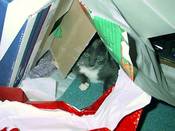
Cat in a box
Here's a little holiday tip you'll want to file away and pass along. It's the definitive step-by-step guide to one of the more demanding tasks faced by cat lovers the world over. Good luck.

Sorry for the graphic nature of the photos. I know they're disturbing. It has taken me a long time to be able to face them myself. I don't generally force them on people like this but I'm posting them today in conjunction with Animal Rights Day to underscore the seriousness of the problem. Tomorrow, things will be back to normal (whatever that is.)Today is International Animal Rights Day. Light a candle or two. Write a letter. Do something nice for a friend. Read the declaration then, please, sign it.


"The cattle were supposed to be dead before they got to Moreno. But too often they weren't.
They blink. They make noises, he said softly. The head moves, the eyes are wide and looking around. Still Moreno would cut. On bad days, he says, dozens of animals reached his station clearly alive and conscious. Some would survive as far as the tail cutter, the belly ripper, the hide puller. They die, said Moreno, piece by piece..."
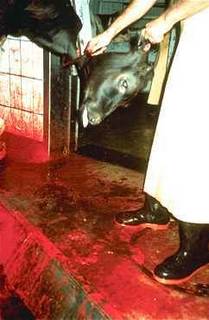
UDAR excerpt:So? A candle. Big whoop. What difference can it possible make? But, in spite of this mocking inner voice, I'm doing it anyway, joining in spirit with others who believe that in an ethical and humane society animals need and deserve rights as well.
"Ultimately, the rights of animals threaten the freedom of some human beings to use them as they see fit, or to further their own particular ends. The arguments against the rights of animals withstand neither logical nor ethical scrutiny because they are the rearguard action of a defeated, specious philosophy.
The rights of human beings have been won at the expense of the privileges of the rich and the powerful, and in the face of their resistance. The source of resistance to this emancipation of animals is not reason or justice, but a false notion of human self-interest."
UDAR excerpt:"There will come a day when such men as myself will view the slaughter of innocent creatures as horrible a crime as the murder of his fellow man. Our task must be to free ourselves by widening our circle of compassion to embrace all living creatures and the whole of nature and
"Science, as much as experience, teaches us that it is no longer possible to assume that animals are mere machines, or bundles of instinct and reflex: they may flourish in freedom or languish under oppression just as we do. We may no longer seek refuge in ignorance."
"I'm sitting in the Deli at Rick's grocery store in Talent as the woman I'm working for shops. It's 6am. She's a nice, eccentric old lady who likes to have the store to herself and pays me $10 an hour to drive her there. I forgot my book, too groggy, so I bought this notebook and these words are the outcome.
What is a good beginning? Who is it for? Do I want to tell a story or do I care about that? I want to create an other. I need to see the myth of my life.
I've been reading Moore's Care of the Soul lately. He suggests welcoming one's questions and problems as messages from the soul; a tapping on the shoulder, a calling to notice, embrace, enter the mystery of imperfection. I've been trying that lately and it's (of course) REALLY uncomfortable. I have been feeling enormous anger, like a hand inside a glove, as though it were a body within my body, with a life of its own. It seems this anger is the primary feeling I used to, unconsciously, consider the native me. This books traffic in answers but they are merely seeds, quick planting but slow growing. I feel embarrassed for expecting so much from the obvious. One thing is certain. I am touching my limits. Feeling my limits. I have become a peculiar, hydra-headed bird, confused by looking in too many directions at once, but there is an end to everything. There's a last time for everything.
Life turning under, into memories, as though it is my only purpose
to create and distill stories.
Right now Barbara is at the cash register, so I've got to go and get the truck."
"There will come a day when such men as myself will view the slaughter of innocent creatures as horrible a crime as the murder of his fellow man. Our task must be to free ourselves by widening our circle of compassion to embrace all living creatures and the whole of nature and its beauty. " ~ Albert EinsteinI'm still shaking. If you've got the guts, watch this just-released undercover footage taken at the Agriprocessors Inc. slaughter house in Postville, Iowa. Here's the five minute version. Or, if you're up to a larger dose of reality, watch the full length version (one half hour). There's also a New York Times article on it. Talk about hell on earth. In one scene, a slaughter house worker even kicks blood in the face of a struggling cow after he rips out her trachea and esophagus. This is all under the supervision and approval of the attendending Rabbi, who claims the cows "feel nothing"! Incredible. What ignorance. It is deeply ironic and horrifying when religious law overrules empathy. What is God if not love? And compassion?
Videotapes Show Grisly Scenes at Kosher Slaughterhouse
By DONALD G. McNEIL Jr.
Published: November 30, 2004
An animal-rights group released grisly undercover videotapes today showing cows in a major kosher slaughterhouse in Iowa staggering and bellowing in seeming agony long after their throats were cut.
The plant, run by Agriprocessors Inc. in Postville, Iowa, is being denounced as inhumane by the group, People for the Ethical Treatment of Animals, and by several experts on animal science and kosher practice.
But the plant's supervising rabbi said the tapes were "testimony that this is being done right." And representatives of the Orthodox Union, the leading organization that certifies kosher products, said that while the pictures were not pretty, they did not make the case that the slaughterhouse is violating kosher law.
The plant is the country's largest producer of meat certified as glatt kosher, the highest standard for cleanliness under kosher law. (Glatt means smooth, or free of the lung blemishes that might indicate disease.) Employing 600 people and selling under the popular Aaron's Best brand, it is the only American plant allowed to export to Israel.
On the 30-minute tape, each animal is placed in a rotating drum so it can be killed while upside down, as required by Orthodox rabbis in Israel. Immediately after the shochet, or ritual slaughterer, has slit the throat, another worker tears open each steer's neck with a hook and pulls out the trachea and esophagus. The drum rotates, and the steer is dumped on the floor. One after another, animals with dangling windpipes stand up or try to; in one case, death takes three minutes.
In most kosher plants, animals are tightly penned while their throats are slashed, and the organs are not torn; tearing by the shochet is forbidden under Jewish law. In nonkosher plants, animals by law must be made unconscious before they are killed.
Virtually all defenders of kosher slaughter, called shechita, insist that the prescribed rapid cut with a razor-sharp two-foot blade is humane because it causes instant and painless death. Jewish law also forbids killing injured or sick animals, so they may not be stunned first, either with clubs as in ancient times or with air hammers, pistols or electricity today.
Federal law considers properly conducted religious slaughter to be humane, and so allows Jewish as well as Muslim slaughterhouses to forgo stunning. But federal rules outlaw leaving animals killed that way conscious "for an extended period of time."
Rabbi Chaim Kohn, of the Agriprocessors plant, says the cows feel nothing, even as they struggle on the floor and slamm their heads into walls. "Unconsciousness and the external behavior of the animal have nothing to do with shechita," he said. Because the throat-tearing happens after the shochet's cut, he said, it does not render the animal nonkosher.
Other experts in kosher law were divided on the issue.
Rabbis Menachem Genack and Yisroel Belsky, the chief experts for the Orthodox Union, which certifies over 600,000 products as kosher - including Aaron's Best meats - said the killings on the tape, while "gruesome," appeared kosher because the shochet checked to make sure he had severed both the trachea and esophagus.
Scientific studies, Rabbi Belsky said, found that an animal whose brain had lost blood pressure when its throat was slit felt nothing and any motions it made were involuntary.
"The perfect model is the headless chicken running around," said Rabbi Genack.
Both rabbis said they were willing to revisit the plant and study whether tearing the throat or letting steers thrash on the ground violated Talmudic proscriptions against cruelty to animals.
The union, they said, prefers a type of pen designed by the American Society for the Prevention of Cruelty to Animals, in which steers are killed standing up with their weight supported. They were designed in the 1950's so American kosher plants could stop killing live animals suspended on chains, which was seen as both cruel and dangerous to the slaughterer.
But a spokesman for Shechita UK, a British lobbying group that defends ritual slaughter against the protests of animal-rights activists, said after watching the tape with a rabbi and a British shochet that he "felt queasy," and added,"I don't know what that is, but it's not shechita."
The spokesman, Shimon Cohen, said that in Britain an animal must be restrained for 30 seconds to bleed, and no second cut is allowed. Done correctly, he said, a shochet's cut must produce instantaneous unconsciousness, so Agriprocessors' meat could not be considered kosher.
Asked how prominent authorities could disagree over such a fundamental issue, he replied: "Well, we don't have a pope. You do find rabbis who interpret things in different ways."
Dr. Temple Grandin, a veterinarian at Colorado State University who designs humane slaughter plants, viewed the tape last week without knowing the location. She called it "an atrocious abomination, nothing like I've seen in 30 kosher plants I've visited here and in England, France, Ireland and Canada."
She said the throat-tearing violated federal anti-cruelty law. "Nothing in the Humane Slaughter Act says you can start dismembering an animal while it's still conscious," she said.
A spokesman for the Department of Agriculture, which also certifies the plant, said it had not received the tapes yet and had no comment.
Rabbi Kohn, of Agriprocessors, said the throat-tearing was done only to speed bleeding. Recent Federal rules for slaughterhouse inspectors do recognize "the ritual cut and any additional cut to facilitate bleeding" as different from skinning or butchering, which is forbidden "until the animal is insensible."
The plant is at the center of a 2000 book, "Postville: A Clash of Cultures in Heartland America," by Stephen G. Bloom, which described the tensions in the tiny farming town between residents and Hasidic Jews from Brooklyn who took over its defunct slaughterhouse in 1987.
People for the Ethical Treatment of Animals, known as PETA, posted the tapes at GoVeg.com today and demanded that the plant be prosecuted for animal cruelty and decertified by kosher authorities. While the group advocates vegetarianism, it accepts that shechita can be relatively painless, said Bruce Friedrich, a spokesman.
Mr. Friedrich said that after two fruitless years of pressing Agriprocessors to improve conditions, PETA sent a volunteer to the plant with a hidden camera for seven weeks last summer.
The cameraman, who spoke on condition of anonymity, said he had no trouble being hired (he was assigned to the sausage department) or filming during his lunch hours and on days he called in sick.
"I'm glad I did it," said the young man, who became a vegetarian and volunteered for undercover work two years ago after seeing a PETA videotape. "I wish people who eat meat could stand where I did and see the things I saw."
Meat from the Agriprocessors plant can end up in any market or restaurant. Because Jewish law requires that the sciatic nerves and certain fats be cut out, which tears up the meat until it can only be sold as hamburger, the hindquarters of virtually all kosher-killed steers are sold as conventional meat.




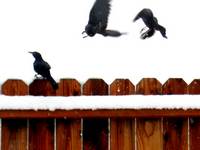

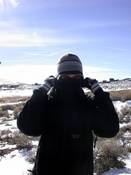





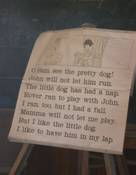
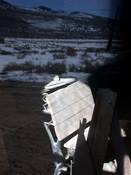





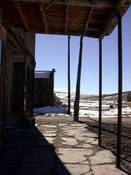
















"Falwell announces new coalition to build on evangelical momentum
By HANK KURZ Jr. / Associated Press 11/09/2004
Trying to seize on the momentum of a presidential election in which moral values proved important to voters, the Rev. Jerry Falwell announced Monday that he has formed The Faith and Values Coalition to guide an "evangelical revolution."
Falwell, a religious broacaster based in Lynchburg, Va., founded and led The Moral Majority from 1979-89, which was credited with boosting conservatism nationwide.
He said the new coalition will have a three-pronged mission that includes ensuring that pro-life conservatives are chosen to fill any vacancies that emerge on the U.S. Supreme Court, a Constitutional amendment banning same-sex marriage and the election of another conservative president in 2008.
"The group's central premise is to utilize the momentum of the November 2 elections to maintain an evangelical revolution of voters who will continue to go to the polls to `vote Christian,'" the 71-year-old Falwell said in a statement released Monday night.
He called the organization a "21st Century resurrection of the Moral Majority," and said he is committing himself to a four-year stint as its national chairman."
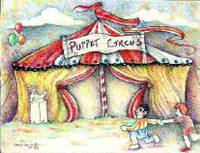

"REALITY-BASED COMMUNITY"This madness is rooted the neoconcervative program of Perception Management. George Orwell with his Newspeak has nothing on these guys.
"In the summer of 2002, after I had written an article in Esquire that the White House didn't like about Bush's former communications director, Karen Hughes, I had a meeting with a senior adviser to Bush. He expressed the White House's displeasure, and then he told me something that at the time I didn't fully comprehend -- but which I now believe gets to the very heart of the Bush presidency.
The aide said that guys like me were 'in what we call the reality-based community,' which he defined as people who 'believe that solutions emerge from your judicious study of discernible reality.' I nodded and murmured something about enlightenment principles and empiricism. He cut me off. 'That's not the way the world really works anymore,' he continued. 'We're an empire now, and when we act, we create our own reality. And while you're studying that reality -- judiciously, as you will -- we'll act again, creating other new realities, which you can study too, and that's how things will sort out. We're history's actors . . . and you, all of you, will be left to just study what we do.'"
